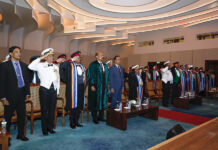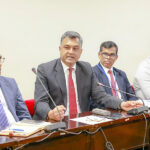Northern and Eastern provinces saw the highest attendance of students, teachers, and principals when schools were reopened for the first time in six months, Education Minister Dinesh Gunawardena told parliament on Friday, October 22.
Classes from grades 1 to 5 recommenced at 5,059 schools with fewer than 200 students on Thursday (21) amid an ongoing strike by teachers’ trade unions which is set to finally end next Monday (25).
Minister Gunawardena said the government was able to open around 98 percent of the targeted schools.
“Sixteen percent of students attended schools across the country, while 26 percent of teachers who signed their attendance,” Minister Gunawardena told parliament.
Principals showed up to work at 69 percent of schools with fewer than 200 students, in the island’s north, while 52 percent of teachers and 21 percent of students were present on Thursday, he said.
In the Eastern province, 67 percent of principals, 45 percent of teachers, and 39 percent of students went back to school on Thursday, he added.
In contrast, schools in the Southern and Western provinces saw lower levels of attendance from principals, teachers, and students, the minister said.
“We believe everyone will support the reopening of schools without any party or colour difference,” Minister Gunawardena said.
Trade unions are not fully onboard the government’s proposed solution to their long-standing grievance of salary anomalies.
The three-month-long strike, one of the longest trade union campaigns in Sri Lanka’s history, has deprived students of their only mode of distance learning in pandemic times: online education.
It is still uncertain if all principals will report to duty on Monday as some principals’ trade unions have said some of their demands including car permits and a mobile phone allowance have not been addressed yet.
School teachers and principals in Sri Lanka were on strike for the 99th day running on October 15 when they said they would start work from October 25.
The government proposed to increase their salaries in a four-year strategy, but upon the rejection of that proposal, the government later proposed to give the increments in two installments. The unions rejected this, too, and continued the strike, demanding that their salaries be increased in one go.












